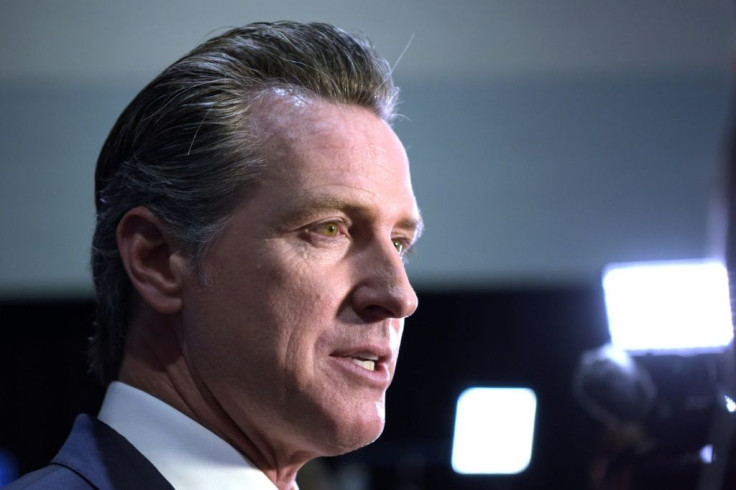Coronavirus In California: Officials Optimistic, But Cautious About Flattened Curve In Bay Area

KEY POINTS
- Several health experts and California officials, including Gov. Gavin Newsom, shared their optimism at early signs that the curve was flattening for COVID-19 cases in the Bay Area
- This was largely credited to early implementation of social distance practices and self-isolation to help combat the virus' spread
- Some officials were cautious about the early numbers, saying things could change overnight due to how rapidly the virus can spread
California health officials said Tuesday that the Bay Area has seen some promising signs after two weeks of self-isolation by residents, but caution that could easily change.
Contra Costa County Health Officer Dr. Chris Farnitano offered the first piece of promising news, saying Monday that the county has had a slower rise in COVID-19 cases than other areas of the state and there’s been no spike in ambulance needs. Doctors at the University of California San Francisco followed up Farnitano, saying that new cases in the city have begun to flatten after the initial surge of cases.
As of Monday, the Bay Area accounted for 1,352 confirmed COVID-19 cases and 24 deaths from California’s total of 6,400 cases and 146 deaths.
UCSF resident physician Dr. Timothy Dyster shared a look at the school’s tracking graphs on Twitter.
Have been graphing #COVID19 data daily based on @SF_DPH case reporting
— Tim Dyster (@timdyster) March 29, 2020
Based on incubation/number of days until severe symptoms, I imagine we’re just starting to see the effect of #ShelterInPlace. Still, *very* hopeful this is an early sign that we did #FlattenTheCurve pic.twitter.com/jLvgy1JGfo
“It’s been hard work and sacrifice, and it will continue to be, but there might be some early evidence that those efforts are paying off,” Dyster said. “So please, keep staying home and keep washing your hands!”
Gov. Gavin Newsom said he was pleased with the early signs of how social distancing and self-isolation have combated COVID-19 in the Bay Area.
“We believe very strongly the stay-at-home order has helped advance our efforts in reducing the stress on the system that we believe would have already materialized in more acute ways had we not advanced those protocols when we did,” Newsom said.
Dr. Stephen Parodi, an infectious disease doctor at The Permanente Medical Group in Northern California, said health care company Kaiser Permanente has seen COVID-19 cases flatten out in hospitals across northern California. Calls for coughs and cold symptoms have also dropped by more than half, giving hospitals more time to prepare for a possible surge Parodi said was still possible.
“While we still predict an upcoming surge, the partnership between the health system and public health officials on the local and state levels to implement social distancing has given us more time to put a lot of pieces in place to prepare for a potential surge,” Parodi said.
Despite the optimism, some officials have cautioned that things can change given how rapidly COVID-19 can spread.
“We are monitoring the numbers. The thing is, is that when this disease takes off, if it does take off, it takes off very rapidly in communities just like we saw in New York,” San Francisco Department of Public Health Director Dr. Grant Colfax said. “I simply do not know if our aggressive actions early on … have had the intended effect. I certainly am hoping and praying that that is the case. We still need the data to confirm that.”
Other areas of California are still struggling to keep up with the spread of COVID. Santa Clara County has been considered the epicenter of the state’s outbreak and hasn’t seen a notable downturn or flattening of cases despite being on one of the first areas to push social distancing and self-isolation.
The number of confirmed cases in the county had risen to 848, with 28 deaths from the virus as of Monday.
“I am not yet optimistic because we don't have enough data to really know,” San Jose Mayor Sam Liccardo said Monday. “And in the absence of surveillance testing at a scale that we see in places like Taiwan and Singapore, we simply don't have enough of a handle to understand whether we've contained this.”
© Copyright IBTimes 2024. All rights reserved.





















